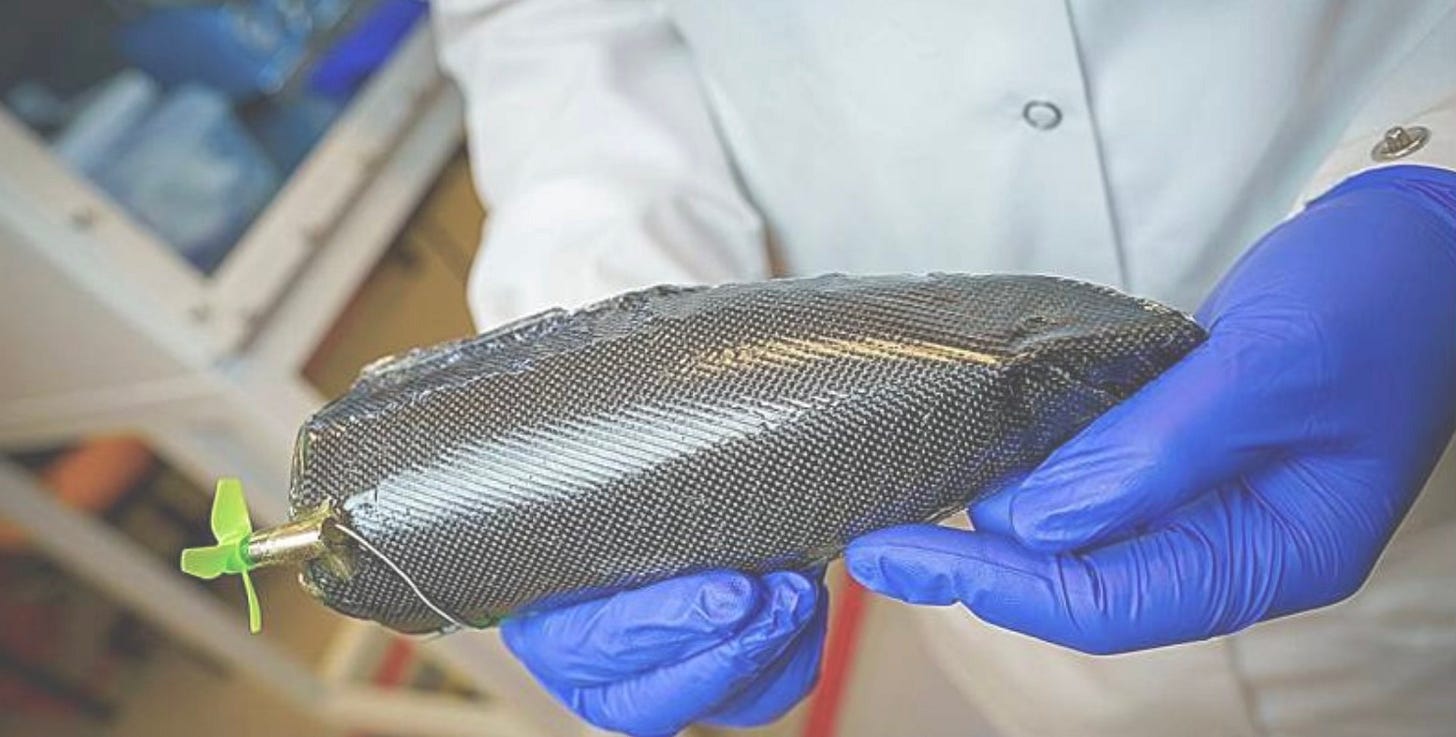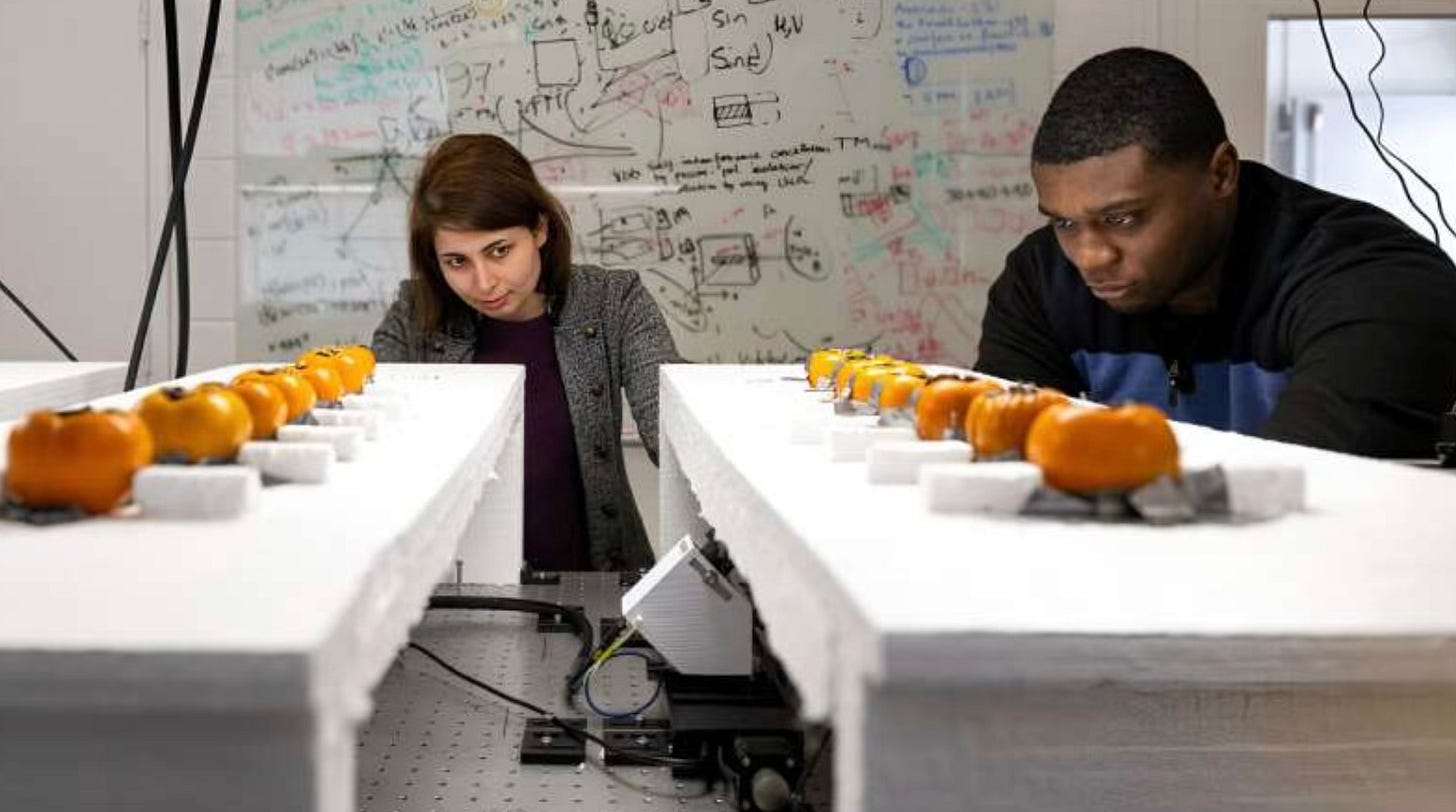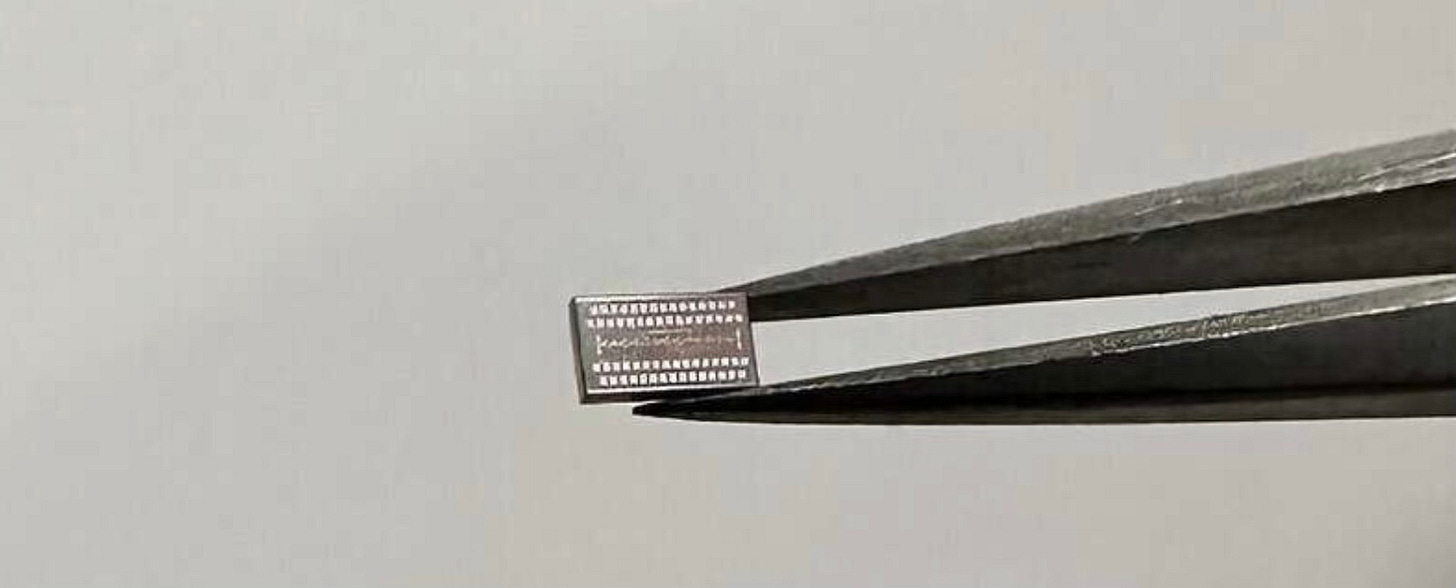Training AI using 18th Century Math, Energy Storing Materials and Millimeter Wave breakthroughs
October 12
This week we investigate how some 18th century math has improved the performance of deep learning algorithms used widely in AI development. We examine a new material that can story energy whilst having structural integrity. We look at two new millimeter wave developments. One that is able to detect the relative ripeness of fruit and a new sensor that is small, cheap and that can be used to monitor tiny changes in plant growth.
18th Century Math training AI
A team at the University of Jyvaskyla in Finland has simplified the deep learning algorithms that are commonly used to train AI by using 18th Century Math. Additionally, they found that techniques used 50 years ago work better than newer more popular techniques.
Deep learning is a technique that uses multiple layers of training based upon massive datasets. This technique is behind the recently popular AI that allows computers to analyze and generate images, play digital games and to act as a conversational agent (e.g. ChatGPT). All of these activities are based upon existing knowledge.
The team was able to show that if simple networks are combined in the right way then the depth is not needed in learning. The shallow models that resulted, actually provided the same or better results.
The team developed a model that comprised an additive combination of linear and nonlinear dimension reduction techniques. The model was able to estimate the intrinsic dimensionality of data. The intrinsic dimension is the size of the lower dimension where data lies without information loss. The lesser the number of levels the simpler the model. AI hallucination can be caused by deep models that have unidentified conflicts.
The work may reduce the computational energy required to train models in addition to the models being less error prone. Deep learning is now ingrained in the techniques used to develop AI. Like all communities the AI community is resistant to change. It may take some time for these new techniques to find broad adoption.
Energy Storing Materials
A team at the University of California, San Diego have developed a structural super-capacitor that not only provides structural support it also stores energy. The team built a mini boat as a proof of concept.
The material consists of a pair of electrode surfaces separated by an electrolyte. This facilitates the flow of ions between the electrodes. A combination of materials that boost mechanical strength and electrochemical performance are then added. The electrodes are made from carbon fibers woven into a fabric. The carbon fibre fabric provides the structural strength. The fabric is coated with a mixture of a conducive polymer and reduced graphene oxide. This significantly enhances ion flow and energy storage capacity.
The solid electrode is a blend of epoxy resin and polyethylene oxide, a conductive polymer. The epoxy resin provides structural support. The conductive polymer creates a network of pores throughout the electrolyte, increasing ion mobility.The concentration of the conductive polymer varies throughout the electrolyte. This variation helps ions flow faster and more freely boosting performance. The central region has a lower concentration of conductive polymers ensuring structural strength.
Potential applications include smartphone cases that provide strength and power and electric cars where the doors, floorboards or other surfaces can store energy. The energy density of super-capacitors is currently less than batteries. Work needs to be done to improve energy density of the superconductors.
Identifying the Bad Apples
One of the problems with our food supply is that when a bad apple is found in a box, the whole box is thrown out. The methods that are used to determine ripeness are unreliable, overly broad, time consuming and too expensive to implement at scale. It is mostly random visual inspection. Roughly one third of all food produced in the US each year is tossed.
A team at Princeton University and Microsoft have developed a fast and accurate way to determine fruit quality piece by piece. This gives producers the ability to sort fruit on fine grained ripeness measures. Good fruit can be separated from bad and ripe fruit can be moved to the front of the distribution system.
The team developed a system using wireless signals in the sub-terahertz band that can scan fruit on a conveyor belt. The sub-terahertz (or millimeter wave) band is between microwave and infrared. The signals interact with the fruit that allow measurement of sugar and dry matter content below the skin of the fruit.
As fruit continues to ripen after harvest, its’ chemical and electrical properties also change. Bananas yellow, grapes wrinkle, avocados darken. It is difficult to know for many types of fruit if the outward markers correlate to actual ripeness or quality.
The signal pulse sends rays below the skin of the fruit. Some of the frequencies get absorbed, others get reflected and many do very little. This provides a signature that can tell us each piece of each type of fruit’s ripeness. The team found that fruit with the smoothest skin was the easiest to measure. Bumpy avocados reflect weaker signals however with enough data this issue can be overcome.
The team believes that the tool can be extended to other foods including meats. This may give new tools to manage food safety and give greater consumer choice.
Millimeter Wave Sensor
Millimeter wave sensors send fast moving electromagnetic waves to targets to analyze their movement, position and speed. They do this via the waves bounced back (see the fruit example above). Millimeter waves are sensitive to ultra small scale movements from microscopic objects.
A team from University of California Davis has developed a sensor that detects vibrations a thousand times smaller than a strand of human hair. The sensor is the size of a sesame seed which is vastly smaller than current sensors of similar accuracy. The sensor was developed as part of a project to monitor the water status of individual plants.
Millimeter wave is used in 5G communication networks however it is difficult to work with due to the power consumption and performance of semi conductors at these frequencies.
The team was trying to pick up the signals of a small leaf thinning. The major problem the team had to solve was removing the noise from the environment in the signal. The noise level from the signal from the leaf was so low it meant that there was vitally no signal tracker that could handle it. The secret turned out to be, using the environmental noise to cancel itself out. The sensor subtracted all the noise that it received from the environment whilst maintaining the sensitivity of their measurements and the integrity of their data.
The chip is simple and cheap to produce and uses a design that greatly improves the energy efficiency. Beyond the monitoring of plant growth there are likely a multitude of applications for the new chip ranging from detecting the structural integrity of buildings to improving virtual reality. There is likely far more potential than has been dreamt up to date.
Paying it Forward
If you have a start-up or know of a start-up that has a product ready for market please let me know. I would be happy to have a look and feature the startup in this newsletter. Also if any startups need introductions please get in touch and I will help where I can.
If you have any questions or comments please comment below.
I would also appreciate it if you could forward this newsletter to anyone that you think might be interested.
Till next week.






